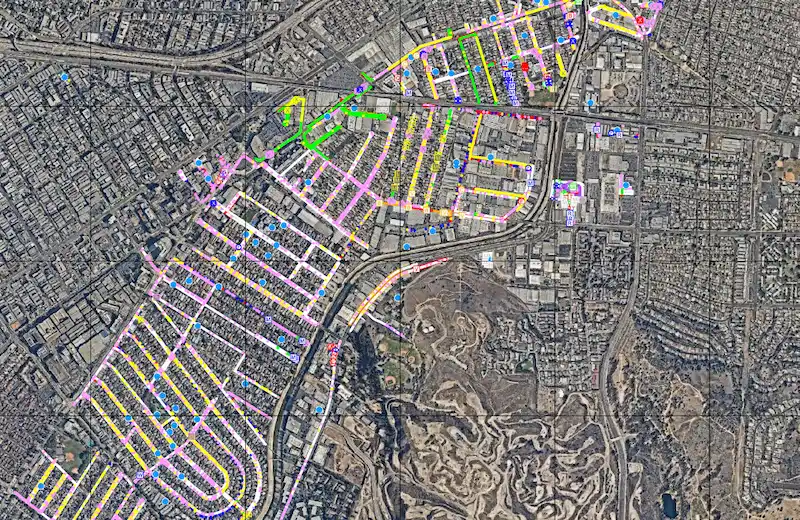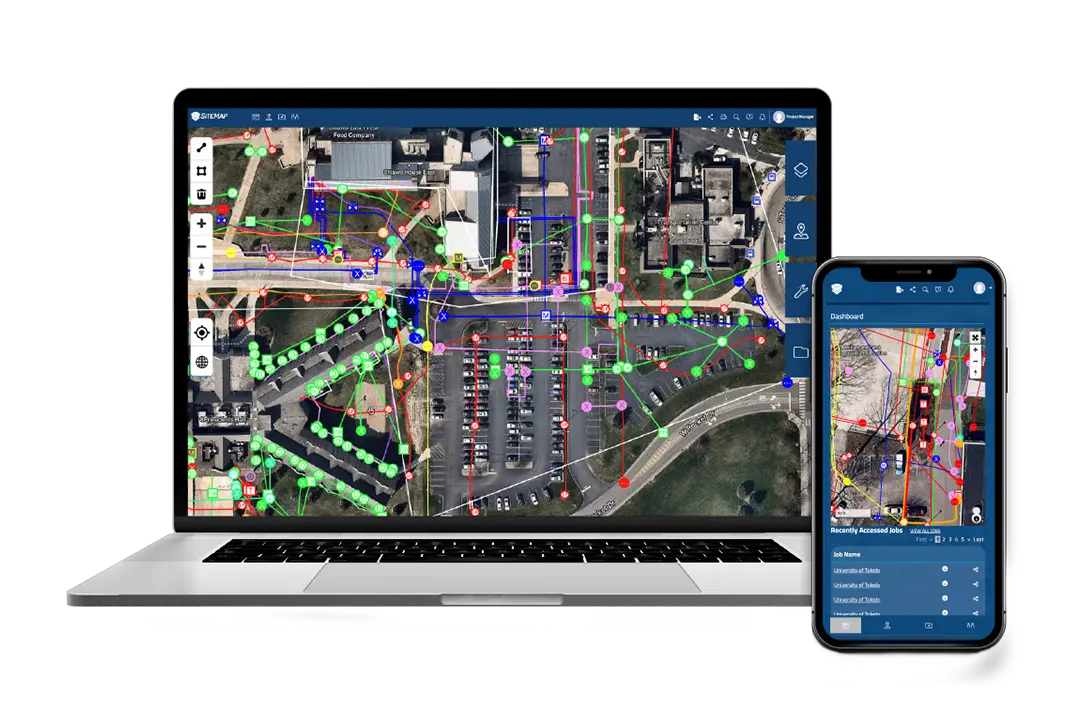

Subsurface Damage Prevention
BEFORE YOU BUILD, CUT, CORE, OR DIG, CALL GPRS
When it comes to construction and facility management, every decision you make can cost time, money, and even lives. GPRS is in pursuit of a world with 100% subsurface damage prevention. Our 99.8% accuracy rate for ground penetrating radar services (GPR), utility locating services, utility mapping services, and concrete scanning services will locate critical targets like underground utilities, post tension cables, rebar, conduits, underground storage tanks (USTs), and more to help keep your project on time, on budget, and safe. Our NASSCO-certified CCTV video pipe inspection & leak detection services find pipe defects, blockages, and leaks with pinpoint accuracy.
Existing Conditions Documentation
ACCESS ACCURATE AS-BUILTS WITH OUR INFRASTRUCTURE MAPPING & MODELING SERVICES
When record drawings do not match the as-built conditions, general contractors and facility managers are at risk of avoidable change orders, delays, budget overruns, and even damage or injuries. Let GPRS’ in-house team create an as-built (TruBuilt) for your project – showing actual existing conditions above or below ground… or both. Our 3D Laser Scanning, reality capture services, and 3D Photogrammetry services deliver up-to-date and accurate construction as-builts, existing condition drawings, 2D CAD drawings, 3D BIM models, 3D mesh models, digital twins, point clouds, updated floorplans (FLRPLN), and more for construction design, prefabrication, clash detection, facility modifications, and asset management.

Facility & Project Management
STORE, MANAGE & SHARE PROJECT DATA WITH YOUR TEAM
Better manage your job site or facility with our GIS software platform, SiteMap®. SiteMap®(patent pending) allows you to quickly access, view, and share your infrastructure data securely with subcontractors, engineers, and your team. All of your utility, structural, water & sewer, and facility information is uploaded into the SiteMap® Map Viewer and Digital Plan Room. You can document construction progress with our Progressive Capture (ProCap) service which utilizes 3D photogrammetry or 3D laser scanning to track the evolution of the site and document key project milestones. Virtual Tours like WalkThru 3D allow you to virtually walk-through a site or facility in minutes, take basic measurements, estimate clearances and distances, and add digital notes.






















































